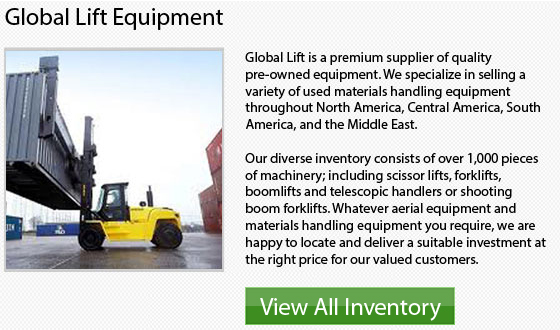
Since its introduction in the early 1920s, the forklift has become an invaluable piece of machine found in many warehousing and industrial operations. Clark, among the pioneers of the very first forklift, has grown to become a leader within the material handling business and still remains a leading supplier. Other well-known names in the manufacturing of these machines include: Hyster, Nissan, Yale Toyota, Mitsubishi and Cat.
The Hyster brand of forklift has become amongst the industries most popular manufacturers. As a matter of fact, in some regions, the word "Hyster" is synonymous with forklift. Various other names for this industrial lifting machinery include: fork truck, stacker truck, lift truck, jitney and high/low.
It was in the 19th century that the equipment ancestors of the lift truck was first made. At this time, small, battery-powered units were made for the purpose of transporting traveler's luggage at the Altoona train station within Pennsylvania. During WWI, some different types were made in England particularly to be used in the material handling business. These machinery evolved as a solution to the manpower shortage at that time.
Today's machines come in numerous sizes and configurations. Sod loaders are large truck-mounted forklift units and several of the larger equipment, while the smaller machines consist of hand truck units. There are also a line of automated versions referred to as forklift automated guided vehicles which are basically robotic in nature. These models were made as a means of lowering operational expenses and to improve production.
A common forklift is able to use a wide range of attachments which are capable of being added for a range of specific functions. The motors can be internal combustion or IC models, working on propane, diesel or gasoline, or there are battery operated options which need regular charging. Typical warehouse units will usually be rated to raise between approximately 1 and 5 tons.
Since their evolution, forklifts have become a priceless component of the material handling business. Thousands of these units are used every day all around the world to perform jobs that used to need much more man-power. Operators must take stringent training programs in order to operate these heavy equipment legally and safely. Numerous employees have longer careers now and better overall health due to their not having to raise things manually anymore since the forklifts can handle those situations now instead.